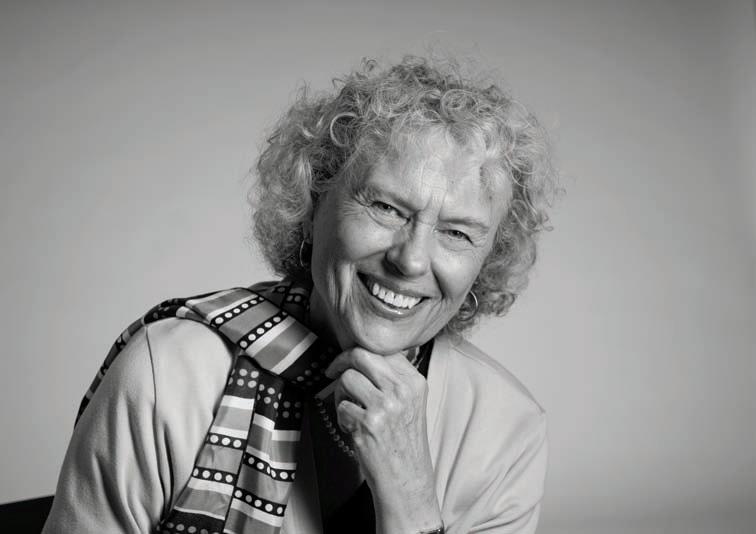autism family album
By Sylvia Wrobel • Photography by Jack Kearse
Emory
geneticists and clinicians are working with families to unravel autism and its triggers one gene at a time.
At 18 months, Griffin Hatcher had missed some common developmental milestones. He wasn’t speaking by 2. At 3, he consistently ignored other children, preferring to lie on the ground and look at the spinning wheels of his toy car. His pediatrician said the boy was fine. So did another doctor. But Griffin’s parents, Molly and Brent Hatcher, insisted on a referral.

When the Hatchers arrived at developmental pediatrician Amy Pakula’s office, their journey—self-described as an “unpredictable, ever-changing, neverending process of having a child with autism”—picked up speed. Pakula, on faculty at Emory and Marcus Autism Center, told them that while she could offer no cure for autism, they could work together to tackle the problems it produced.

Treatment with Prozac caused neighbors to ask why the boy suddenly seemed less anxious and more engaged. Griffin’s days filled with therapy—for speech, the activities of daily life, social interactions, and even occupational therapy on horseback. Following an individualized program prepared by Pakula, the 4-yearold entered a special preschool near his Flowery Branch home, where he could mix with typical kids.
“Amy never sugar-coated anything, and
she went after every problem decisively and aggressively,” says Brent, a lawyer. “We felt a tremendous sense of relief and direction, like we now had a team.”
When it was time for public school, Pakula prepared another program, outlining in detail the support Griffin would need, including a paraprofessional to accompany him to some classes. It was up to the Hatchers to persuade the school system to accept—and pay for—this plan. They requested detailed reports from everyone who had worked with Griffin, and an outreach specialist from the Emory Autism Center reviewed their case. Griffin’s therapists attended the successful meeting with school officials.
Now almost through his first year of public school, Griffin can read, his handwriting is improving, and he performs better socially. On weekends, he asks to go to school. He enjoys his brother Davis, a
2 emory he A lth 3 Spring 2009
Meet the h atchers: father Brent, mother Molly, and the two boys, Griffin and Davis.
Two doctors told Molly Hatcher her son, Griffin, was fine, but she insisted on a referral. An Emory physician confirmed what she had suspected. Griffin had autism.

typical 3-year-old. Abstract thought remains hard, but his memory for details is almost photographic. In downtime, he navigates the computer, playing with his toy guitar to mimic the musicians he finds on YouTube. The journey, however, remains a challenge. Prozac often keeps Griffin (and his parents) awake much of the night. The Hatchers have to guess when their son is sick or in pain, since he never tells them. They
behind the science
the smallest of details such as what Molly ate during pregnancy. All of their responses, like their DNA, are now part of a national database that is collecting information on families who have one child with autism.
Molly Hatcher says before their journey with Griffin began, “I used the word ‘hope’ so casually, to refer to whether it would rain or what I might get for my birthday. Now it means we will learn more about autism and
diverse group of autism spectrum disorders (ASDs).
How many are there? Emory geneticist David Ledbetter says that scientists could end up identifying 100 or more different kinds, each with a different genetic basis and each accounting for just a small percentage of total cases. His research, and that of colleague Christa Lese Martin, focuses on genes or chromosomal events that by themselves
Joseph c ubells was one of the first scientists to point to a connection between a deletion syndrome known as 22q11 and autism.
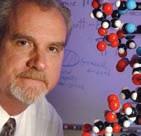
c hrista lese M artin performs studies that identify specific chromosome duplications in families who participate in an autism gene bank.
smile pleasantly while friends fret that their children didn’t make the football team or get an A. They deal daily with a condition that needs continuous intervention but is not well reimbursed by insurance companies.
The Hatchers are eager to contribute to autism research. Griffin’s diagnosis is pervasive developmental disorder, not otherwise specified. Although he has undergone genetic testing for all causes of autism spectrum disorders currently known, nothing has surfaced. On Pakula’s recommendation, the family participates in a project at Emory and Marcus that searches for any characteristics to distinguish different varieties of autism and any genes, exposures, or combinations that could explain them. Both parents have spent hours in interviews, giving family histories, submitting to head and ear measurements, being photographed, recalling
s tephen Warren discovered the fragile X gene can cause one form of autism and is now working to identify a drug treatment for the faulty gene.
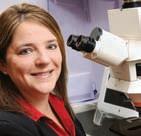
that things will get better for Griffin and others with autism spectrum disorders.”
a utism genes
When autism was first described in the 1940s, the blame often was assigned to emotionally distant “refrigerator” mothers who failed to properly bond with their babies. That long-disproved theory—and the pain and guilt it caused so many parents—was one of medicine’s most shameful mistakes, says Emory psychiatrist and geneticist Joseph Cubells.
Today, the only known causes of autism are genetic. Increasingly precise genetic assessments, like those being developed at Emory, are correcting another earlier misconception: autism is not a single disorder, any more than cancer or mental illness is. Rather it is a neurobiologically
Davi D l e D better believes scientists could end up identifying more than 100 different kinds of autism, each with a different genetic basis.
produce a specific ASD. So far scientists have found at least 15 of these, including the fragile X gene discovered by Emory genetics chair Stephen Warren. Most geneticists now believe that many ASDs result from the interaction of multiple faulty genes, many not yet discovered. To complicate the impact even further, some of these genes are likely to be “susceptibility” genes that not only must interact with each other but also with one or more environmental triggers.
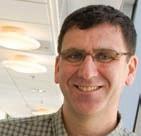
Complicated, says Ledbetter, but encouraging. “We are just beginning to understand how specific genotypes can result in different autistic phenotypes [similar patterns of cognitive, linguistic, and behavioral problems]. That has immense implications for diagnosis and personalized intervention—both behavioral, and eventually, pharmaceutical.”

4 emory he A lth 5 Spring 2009
F e Ature THE GENETICS OF Au TISM
suggested reading
The CDC has been tracking and monitoring the prevalence of autism since 1996. See cdc.gov/ncbddd/autism/actearly for a list of developmental milestones and early signs of autism spectrum disorders.

The NIH provides an extensive description of the various forms of autism at nimh.nih. gov/health/publications/autism/.
autism resources
The Emory Autism Center (EAC), with the largest staff of specialized autism providers in Georgia, offers diagnosis, family support, and treatment and serves as a vital source of professional training. Last year, the center provided clinical care to more than 840 children and adults and strategies for families to reinforce learning at home and in the community. The center’s specialists also consult with community physicians and community and state entities.
The center’s Walden Lab School frequently is cited as one of the nation’s top five models of early autism intervention, based on integrating children with autism into classes with typically developing toddlers, preschoolers, and pre-kindergarteners. The EAC’s Monarch Program provides training and consultation services to schools K–12 that want to improve their educational programs for students with autism. More recently, the EAC has developed services for adolescents and adults, including Asperger’s support groups. Research at the EAC focuses on early intervention, including teaching and social conditioning, work that has changed how autism is treated across the country. EAC researchers also collaborate with the CDC, investigating reports of increased autism prevalence. psychiatry.emory.edu/clinical_ sites_autism_center.cfm, 404-727-8350.
t he family array
The idea of using genetics to define a disorder is not new. In the 1960s, after scientists found the extra chromosome that causes Down syndrome, they began to discover chromosomal imbalances characterizing specific syndromes almost monthly. Today, thanks to the vast amount of genetic information available from the Human Genome Project and to new high-throughput cytogenetic microarray technology, a similar renaissance is occurring for autism. For example, Emory scientists developed one such technology, EmArray, now used in a clinical laboratory consortium of more than a dozen u.S. laboratories and 40 additional labs in Canada, Europe, and South America.
Microarrays are glass slides or silicon chips to which nucleic acid probes are chemically attached. With these arrays, scientists can examine thousands of genes simultaneously, detecting both chromosomal additions and deletions and subtle differences in genes and gene expression.
The Emory Genetics Laboratory each
year provides microarray genetic testing for more than 2,000 children with developmental delays referred by physicians from across the country. Of those, approximately 400 are related to autism. The Emory lab was one of the first to use cytogenetic microarray testing for autism. using this technique and the current state of knowledge about genetic bases, a specific genetic diagnosis for autism can be identified in 5% to 8% of cases. For others, such as Griffin Hatcher, a specific genetic diagnosis remains elusive.
k nowing where to look
But maybe not for long. Families who are willing to share medical information and genes are invaluable to progress in understanding autism, says Ledbetter. The Autism Genetics Resource Exchange (AGRE) was the first collaborative gene bank for autism. More than 1,000 families—a majority of “multiplex” families with two or more children diagnosed with ASD—have contributed clinical and genetic information, including DNA samples, from both affected and unaf-
fected family members to the gene bank. Warren serves on the Autism Speaks board, while Ledbetter serves on AGRE’s scientific board. Ledbetter, Christa Martin, and a colleague from uCLA perform cytogenetic and molecular studies that identify specific chromosome duplications among families who participate in the gene bank.
A second repository—the Simons Foundation Autism Research Initiative (SFARI)—focuses on “simplex” families, who have one child with ASD. The initiative collects clinic-based assessments and genotyping on the child with ASD as well as the parents and unaffected siblings. Among other research, the initiative sponsors a family collection study led by Martin and conducted by Emory’s genetics department, the Emory Autism Center, and Marcus Autism Center (an affiliate of Children’s Healthcare of
Atlanta that works with children with developmental disabilities and collaborates with Emory, Georgia Tech, and others). As the only SFARI program in the Southeast, Emory is recruiting 150 families from those seen in Atlanta facilities or found through local autism support groups, school psychologists, and other community activities. In all, SFARI hopes to recruit 2,000 simplex families.
As an example of their power and cooperation, the databases are allowing Warren and his colleagues to conduct a study to determine whether genetic variations on the X chromosome play a largerthan-suspected role in causing autism. One reason to think they might is the fourfold excess of males with autism, a pattern that could arise because males, with only one copy of the X chromosome, would be more likely than females to be affected by
X-linked mutations. Another reason is that the X chromosome is home to a large number of genes (including fragile X), whose mutations are known to cause problems with brain development.
The study, funded by the Simons Foundation, looks at the entire X chromosome of 300 autistic males, using microarraybased genomic selection technology developed by Emory geneticist Michael Zwick. The ambitious three-step process begins with identification of all deletions, duplications, and gene variations on each boy’s X chromosome. Next comes a resequencing (or comparison to the human genome) of the coding portion of every gene, thus detecting any variations in how each gene “codes” or instructs for the production of the protein that carries out the function of the gene. Finally, the research focuses on epigenetic

6 emory he A lth 7 Spring 2009 F e Ature THE
GENETICS OF Au TISM
Griffin Hatcher shares a love of guitar with his father, Brent, playing along on his own toy instrument to the musicians he finds on YouTube. He also enjoys hanging out with his brother, Davis (opposite).
changes, processes outside the gene itself that could influence gene expression, explaining why what looks like the same variation could have different effects from one person to another.
Personalizing genetics
Each week, Amy Pakula sees a dozen new referrals of babies and children with suspected autism at Emory and Marcus Autism Center. She follows more than 500 of these patients throughout the year. Part of her challenge is to take each child’s genetic and developmental status and to create an intervention tailored for that child.
“I am the person who personalizes the science to practical services,” Pakula says. “We are just beginning to learn that certain combinations of autistic problems cluster together in children with specific genotypes. As research continues, we may learn that certain treatments and behavioral management strategies work better in some of those groups than others.”
more autism resources
of the 15 or so known causes of autism, and more than a third of patients with the deletion have an autism diagnosis. An even higher number exhibit autistic-related problems of communication, social interaction, and stereotypic behavior.
An unknown number of people with the 22q11 deletion are “clinically silent,” at least in early years, but they may develop serious heart, renal, immunologic, and endocrine disorders. Schizophrenia also may emerge in up to 30% of these adults, something not seen in other forms of ASD.
A study by Cubells, co-investigator Opal Ousley, and other Emory and Children’s researchers was one of the first to point to an overlap between the 22q11 deletion abnormality and autism. Currently, the researchers are comparing autistic features in patients known to have 22q11 deletion syndrome with autistic features in patients with other chromosomal disorders that show a high rate of autism, such as fragile X. It is already known that the deletion is often characterized by poor early language development.
traits, such as repetitive behaviors.
Soon after discovering the fragile X gene, Warren discovered the protein it produced. That enabled him to develop the first biologic diagnostic test and better explain why fragile X could have such a wide range of effects, depending on how much protein is produced by the damaged gene.
It also allowed him to identify a compound that causes fruit flies with a fragile X-like disorder to give up their fragile X-type behaviors and develop more normal biochemistry and brain wiring (Nature Chemical Biology April 2008). Getting a drug from the lab to patients can take as long as 15 years, so Warren deliberately tested only compounds that already had survived FDA safety testing. With that hurdle eliminated, he anticipates clinical trials could begin in humans within the next two years. If the compound works as well in humans with fragile X as it has in the insect model, this treatment could open the door for many other forms of ASDs.
An affiliate of Children’s Healthcare of Atlanta, Marcus Autism Center works with children with autism and related disorders. The center diagnoses and treats children with a wide range of neurologic problems, including autism spectrum disorders. They work with parents to find ways to help children cope with their disability, including carefully managed therapy to teach children to circumvent barriers posed by the disability.
That’s why she recommends that families undergo genetic testing for known causes and why she encourages families to participate in family databases.
“I cannot do my job in the clinic without the geneticists, and they cannot gather the data they need without the help of the families we see,” Pakula says.
Not just for kids
Most autism research and organizations focus on children. But these kids grow up.
Every week psychiatric geneticist Joseph Cubells sees a handful of autistic adults, and he suspects some people with the most severe cases went undiagnosed in earlier eras and today are either confined to mental institutions or among the homeless.
Although Cubells sees many patients with Asperger’s (a form of autism with normal, sometimes above normal, language and intellectual development), most of his ASD patients come from physician referrals for co-existing psychiatric problems, from
depression to psychosis. The challenge of getting feedback from often linguistically impaired patients, coupled with a paucity of research on psychotropic medications in adults with ASD, makes his job a big one. Many patients arrive already taking a potentially toxic mix of four or five prescriptions accumulated over the years by a series of clinicians desperate to do something.
“One of the rewards of working with adults with autism,” says Cubells, “is that it almost invariably involves working with families. Patients whose families stay involved generally do better.”
Families also are helping researchers learn what to expect from patients with similar genotypes, says Cubells. Take, for example, the deletion syndrome known as 22q11, for which Cubells and colleagues at Emory and Children’s Healthcare of Atlanta have developed a new clinic. Affecting one birth in 4,000, the chromosomal anomaly is second only to Down syndrome in frequency of occurrence but far more variable. It’s one
“If these studies show other systematic characteristics, we’ll be closer to understanding the relationship between specific genes and certain behaviors,” says Cubells. That could lead to better diagnosis. For example, Ousley already is working on possible biomarkers for this form of autism and others as well as specialized behavioral and educational interventions. Eventually, scientists believe this genetic understanding could identify drug targets to counteract the actions of a specific genetic change.
t he fragile X hope
There’s a long way to go before that happens, but Stephen Warren sees hope. He may be on the verge of identifying a drug treatment to compensate for a faulty fragile X gene, known to cause one form of autism. Five percent of people with autism carry this gene. Furthermore, 30% of people with fragile X meet the criteria for autism in the Diagnostic and Statistical Manual, the bible for practitioners diagnosing psychiatric disorders, and 80% of those with fragile X show autistic
When autism was first recognized, moms got the blame. Today, say Emory researchers, mothers and fathers deserve much of the credit for advances in understanding this disorder. As advocates, lobbyists, spokespersons, and almost universal participants in the family-initiated AGRE and SFARI programs, families touched by autism are research’s biggest supporters.
The unusually strong alliance of scientists, clinicians, and families comes at a time of incredible new research tools, says Warren. For understanding autism, it’s the perfect storm. The Human Genome Project and technology that can spot differences in individual genomes, such as EmArray and Zwick’s genomic selection microarray, enable scientists to take data provided by families and chip away at autism, one ASD subset, one chromosomal irregularity, one gene, at a time. What they are finding may help personalize treatment and, eventually, as Warren’s fruit flies suggest, mitigate, even prevent its problems.
The Early Intervention Program at Marcus Autism Center is an evidencebased program for children, age 18 months to 8 years, with autism spectrum disorders, providing intervention services for families who share a goal of transitioning children into public or private school systems. The Pediatric Neurodevelopmental Center provides evaluation and treatment for children by developmental pediatricians, child and adolescent psychiatrists, social workers, and others.
The Marcus School offers educational programs for children who exhibit aggressive and destructive behaviors, helping them learn to modify behaviors so they can participate in neighborhood schools and enjoy a better quality of life at home. Marcus and Children’s collaborate closely with Emory, Georgia Tech, and others to provide autism resources for the community. marcus.org, 404-785-9400.
web connection:
To view a series of videos on autism and genes, see whsc.emory.edu/r_autism_ vid.html.
also visit the Emory Autism Center , psychiatry.emory.edu/clinical_sites_autism_ center.cfm (404-727-8350) and the Emory Genetics Laboratory , genetics.emory.edu/ egl/index.php (404-778-8500).

8 emory he A lth 9 Spring 2009
A personalized education plan developed at Emory is helping Griffin Hatcher (left) navigate the challenges of autism. He’s adapting better socially, but abstract thought remains hard.
Miles Miracle
With the help of hundreds of volunteers, Emory is on the road to finding new medical treatments, clinical trial by clinical trial.

Early in his career, neurobiologist Don Stein noticed something unusual in studying the behavior of brain-injured rats. After a brain injury, some females seemed to recover promptly while the male rats did not.
Some 40 years later, after much trial and effort, Stein was able to prove that progesterone, a reproductive hormone, explained why. The hormone seemed to slow or block damaging chemicals released after brain injury, protecting brain cells from destruction. Both male and female rats with brain injury developed less brain swelling and recovered better when they were treated with progesterone soon after the injury.
 By Quinn Eastman • Photography by Jack Kearse
By Quinn Eastman • Photography by Jack Kearse
10 emory he A lth 11 Spring 2009 F e Ature M EDICAL MIRACLES
Edmund Waller (left) heads clinical trials at Emory Winship Cancer Institute and once faced the decision of whether to have his son, Anthony (right) participate in a clinical trial. Anthony was diagnosed with leukemia at age 16. Today at 23 and fully recovered, he works as, in his dad’s words, “a computer and software wizard” in Emory’s Department of Radiation Oncology.
But would progesterone work similarly in human brains? It was an important question because there had been no new effective treatment for traumatic brain injuries in four decades.
Emory emergency medicine physician David Wright led a three-year pilot study to begin to answer that question. Called ProTECT (Progesterone for Traumatic Brain Injury-Experimental Clinical Treatment), the study tested the safety of giving progesterone to 100 people soon after they experienced a traumatic brain injury. The results were encouraging: not only does the treatment appear to be safe but it also cuts the risk of death by 50% and reduces subsequent disabilities.
This year, Emory hopes to embark on a large-scale, national clinical trial to test whether the promising results hold up with a larger patient sample. With the planned collaboration of 17 university partners around the country, the phase III trial will be led by David Wright at Emory. Investigators are planning to enroll 1,140 people, beginning in the fall of 2009.
The progress for treatment of traumatic brain injury is just one demonstration of the value of clinical trials. In fact, clinical research is the only way that researchers can judge whether a treatment developed in the lab has a high probability to work in people or that an effective procedure, sometimes discovered by accident, can be replicated in a larger population with similar good results.
Despite unknown outcomes and some studies that fall short of expectations, clinical trials have a track record of producing life-saving cures, sometimes nothing short
of miraculous. They also have yielded new medical devices, from instruments for laser surgery to pacemakers and artificial joints. In fields from neurology to cancer, demand for participants in clinical trials is increasing. The Association of Clinical Research Professionals reports that industry spending on patient recruitment has doubled across the nation in the past five years. Yet few patients with serious illnesses participate in clinical trials—in fact, less than 5% of cancer patients do so, according to the National Cancer Institute.
One reason is that historically clinical trials often have been unavailable where patients lived, clustered in academic medical centers. Emory is working to offer more clinical trials to patients outside of the metro Atlanta region. In November 2007, Emory Winship Cancer Institute and the Georgia Center for Oncology Research and Education (Georgia CORE) opened the first statewide clinical trials for cancer in Georgia. The study allows the collaboration of investigators from an academic medical facility with community-based oncology practices and other academic centers to enroll patients in a clinical trial for early-stage breast cancer.
Medical research needs people to say yes to participation in clinical trials more than ever, says Carlton Dampier, medical director of Emory’s Office for Clinical Research.
“The major reason why studies fail is that not enough people are enrolled,” Dampier says. “We’re losing potentially valuable treatments because they can’t be adequately tested.”
Why patients say “yes”

At Emory, hundreds of people agree to take
part in clinical trials each year. Currently, Emory is running more than 1,340 clinical trials sponsored by the NIH and other government and private organizations. At Winship alone, more than 500 patients were enrolled in clinical trials in 2008.
Some of the university’s studies are in collaboration with partners, such as the Atlanta VA Medical Center, Georgia Tech, Grady Health System, and Children’s Healthcare of Atlanta. These studies approach health from a wide range of treatment and prevention strategies. Clinical trials now under way are evaluating the effects of a Mediterranean diet on oxidative stress, whether calcium and vitamin D can reduce the occurrence of colon polyps, a new surgical technique for adult congenital heart disease, and the effect of B12 supplements on Parkinson’s disease.
Because the outcomes of clinical trials are uncertain, it’s not always easy for patients to decide to sign on. What if the treatment being tested doesn’t work or has serious side effects? Will they even get the treatment or a placebo if they decide to participate?
Recently retired engineer McCamie Davis agreed to take part in a trial at Emory to see if a vaccine could slow progression of Alzheimer’s disease. “The doctors explained it very thoroughly,” Davis says. “As long as you were in the trial, you could not know if you got the vaccine or not. But at the end, when they tally up the results, you could get the real vaccine if it turns out to be good.”
At the moment, Davis is still able to make such decisions. As his disease progresses, however, it may impair his ability to do so. That’s why this particular clinical study, and others like it, requires the agreement and
As long as a decade ago, a federal review concluded that the consent process had become “a disclaimer for institutions rather than information for the participant” and “may be inappropriately deterring individuals from participating.”
participation of a caregiver—in Davis’s case, his wife Starla.

“Of course, part of the reason we wanted to participate is that we hope there will be improvement for him,” Starla Davis says. Even if they don’t benefit from a miracle themselves, many patients choose to participate in clinical trials partly because they think they can further medical science and help others. “Many of the families we work with talk about leaving a lasting legacy,” says Janet Cellar, a clinical research nurse at the Emory Alzheimer’s Disease Research Center.
Removing roadblocks
One of the first lessons health care students learn is, do no harm. Clinical trials also follow this mandate by putting precautions in place on behalf of participants. Emory’s Institutional Review Board (IRB) reviews, approves, and monitors all trials to ensure that volunteers are protected from needless risk. The IRB committee also makes sure that participants are protected in accordance with federal regulations and that they fully understand the clinical trials process through informed consent.
“Anything less than full and accurate information could be considered deception,” says Aryeh Stein, co-chair of Emory’s IRB and a global health researcher in Emory’s Rollins School of Public Health.
Although Stein and his colleagues have tried to simplify the language of consent forms, federal regulations and legal requirements make a typical consent form lengthy— usually a dozen pages or more. As long as a decade ago, a federal review concluded that the consent process had become “a
disclaimer for institutions rather than information for the participant” and “may be inappropriately deterring individuals from participating.”
Emory cardiology fellow and bioethicist Neal Dickert is working with cardiology colleagues Habib Samady and Alex Llanos to simplify the informed consent process for an ongoing clinical trial in which they are testing a modification for restoring blood flow to the heart after angioplasty.
During angioplasty, doctors use a balloon at the end of a catheter to open up the obstructed coronary artery and restore blood flow to the heart. However, recent evidence supports the idea that rapid restoration of blood flow may damage the heart muscle as much as the original disruption of flow.
Llanos and Samady are testing a modified “stuttering” procedure in which the balloon is precisely controlled to inflate and deflate several times. The goal is to allow blood back into the heart gradually to prevent damage.
The Emory researchers are among the first to test this procedure, known as post-conditioning. They will use MRI and echocardiography to assess heart muscle damage in patients treated with standard angioplasty and those treated with the postconditioning approach.
Although the study began with regular consent forms, Dickert and colleagues have developed a shorter form, just two pages, and an oral script for doctors to follow in obtaining permission from potential participants. During 2009, the study will make a switch to the
shorter forms, and Dickert plans to interview patients while they are still in the hospital to assess whether the new process results in better understanding of important facts about the study and improved satisfaction with the consent process.
The outcome of the cardiology study is unknown, and despite its early promise, so, too, is that of ProTECT. That is why clinical trials, with all their challenges of oversight and informed consent and patient recruitment, remain vital. They are the vehicles by which these unknown results become known. They hinge on the imagination of innovative researchers and the participation of forward-thinking volunteers. They mark the long road to the next small step in managing a chronic disease, to testing a promising cure, and sometimes, even finding a medical miracle.
12 emory he A lth 13 Spring 2009 F e Ature MEDICAL MIRACLES
“The major reason why studies fail is that not enough people are enrolled. We’re losing potentially valuable treatments because they can’t be adequately tested.”
—Carlton Dampier, medical director, Emory’s Office for Clinical Research
Retired engineer McCamie Davis and his wife, Starla, are taking part in a clinical trial to see if a vaccine can slow progression of his Alzheimer’s disease.
WEB CONNECTION To hear about the experience of one Emory patient, Ginny Johnston, with clinical trials, visit whsc.emory.edu/ cancerstories.html.
Greg Berns doesn’t want you to make a decision by yourself. He doesn’t trust you. People don’t make rational decisions, he contends, and you are likely to muck it up. Don’t be offended by his reasoning, though. He says that there are biological reasons why we all get it wrong.
Just by way of his resumé, Berns would seem likely to make better decisions than a lot of us. He’s a poster boy for overachievement, with degrees in physics, biomedical engineering, and psychiatry. He’s written two books on decision-making. Yet he too knows that he makes decisions like everyone else. He’s vulnerable to the influence of irrational thinking, the emotional sway that invades his—and everyone else’s—reasoning.
He has built a career researching what goes on in the brain when people formulate decisions. Now he’s started the Center for Neuropolicy with the goal of giving policymakers in the economic and political arenas a bit of neuroscientific enlightening.

“In the long term, I hope the center will elevate neuroscience and attract some attention to how the brain works,” he says. “The task is to get the bureaucrats to care.”
The brain on economics
Berns, an Emory psychiatrist, is riding the new bandwagon of neuroeconomics. It’s a relatively young discipline that’s a blending of neuroscience, economics, and psychology,
 By Kay Torrance • Illustration by Stanislawa Kodman
By Kay Torrance • Illustration by Stanislawa Kodman
all combined to develop findings around how the brain makes financial decisions.
Early on, neuroscientific researchers began looking at why people made the financial decisions they did, mostly because economists had gotten it wrong.
Economists had long assumed that with proper information or instruction, people would make good financial decisions, systematically and without emotion.
“We know from studies that people don’t make rational decisions,” Berns says. “The problem with economic models is that they assume a certain level of rationality by people, that people will maximize their benefits.”
Add into the mix that most of us don’t know that we are irrational, says Emory economist Mónica Capra, who is a member of the center. “People believe they themselves are rational, even if everyone else isn’t,” she says.
“We want to minimize energy needed to make a decision so we use rules of thumb. We also tend to overweigh low probability and underweigh high probability.”
One case in point: Why do we still save too little and spend too much even when we know the consequences? Are we just not listening? To get some answers, economists began reading what the psychologists and neuroscientists were finding.
Since 2002, when psychologist Daniel Kahneman of Princeton and economist Vernon Smith of George Mason university were awarded the Nobel Prize in economics, neuroeconomics has been gaining traction. Centers for neuroeconomics have opened
in universities in the united States, Europe, Israel, and Japan. The first scholarly neuroeconomic journal appeared in 2008, and another is planned. The first edited textbook on the subject appeared last fall, and the Wall Street Journal debuted its first neuroeconomic columnist last July.
Neuroeconomists have essentially redefined some economic models, says Elliot Bendoly, an information systems and operations management specialist at Emory and a member of the Center for Neuropolicy.
“Economic models affect the debate in Congress, how we live,” he says. “It’s not that people are deviating from the ideal economic model, it’s that the ideal is wrong. The hope is that as economic models develop, they incorporate human behavior.”
How the brain affects policy
Berns would like to take neuroeconomics a step further in order to boost the effectiveness of policy-makers. If policy-makers understood how they make decisions, they could stop wasting time on ineffective legislation. (For example, cigarette taxes have been less successful in convincing people to stop smoking than social pressure, Berns says.)
Policy-makers tend to act when consequences come into the present. Berns points to global warming as an example. Many see global warming as a long-term problem, but so far governments haven’t done much to stem it.
“Humans are myopic,” he says. “We have a hard time conceiving of ourselves one year from now, much less 20 or 30 years from
now. There’s no incentive to make long-term decisions. That’s a problem in this country.”
Blame our myopic nature on dopamine, a chemical in the brain that either increases or reduces the activity of nerve cells. Dopamine is called the “pleasure chemical,” but Berns tags it the “chemical of anticipation.” Dopamine affects brain processes that control emotional response and ability to experience pleasure and pain. “Dopamine is like crack,” he says. “It’s here, and then it’s gone.”
Myopia, though, can be overridden by focused attention, Berns says. “We can make projections, but the question is how to bring them into the consciousness of the people you are trying to affect,” he says. “I don’t have the answer for that. Collective decisionmaking is political, but politics are biologic. The human brain evolved to function in social groups. By discovering how our brains are wired to behave in group settings, we can begin figuring out solutions to problems of global impact.”
Berns started making the rounds in intelligence and military communities in December. His center and the u.S. Air Force hosted a conference to spur interest in research collaboration. One topic of discussion was how abstract social values, such as religious and political ideologies, become distorted in the brain and subvert basic selfsurvival value judgments, which occur in war and terrorism.
Ideological values are “sacred,” have no monetary value, and therefore are powerful in their emotional pull. Are there circuits in the brain that predispose people to fall into certain groups? Do political ideologies tap into those circuits?
The answers to those questions, Berns hopes, will lead to more effective government. We have the technology to solve our most daunting problems, but “the real problem is human nature,” he says.
emory he A lth 14 Spring 2009 15
“ H uma N s ar E m Y o PIC . we have a hard time conceiving of ourselves one year from now, much less 20,30 years from now. tHE r E ’s N o INCEN t IVE to mak E lo N g-t E rm d ECI s I o N s.”
h ow one e mory neuroscientist wants to help policy-makers by peering into their brains
or
Home away from home
In the living room, heart transplant recipient Chester Howard listens to his son, Brandon, strum a guitar. Across the hall in one of three kitchens, Inga Boyce stirs a pot of goulash on the stove. On the upper floors, others relax, read books, or send emails to friends.

It is a typical night in the Mason Guest House, a private retreat that offers affordable lodging for transplant patients and their families. The house accepts guests dealing with any phase of transplant, whether they are getting an initial evaluation, undergoing a transplant, or waiting to transition to home after surgery.
Located on Emory’s Clairmont campus, the house welcomes transplant families from Emory and other centers in Atlanta.

“We really wanted our house to have the intimacy of a home,” says Jennie Perryman, director of policy and outcomes management at the Emory Transplant Center. “We wanted our guests to feel far enough away from the hospital to be comfortable but close enough to feel secure.”
After
The Tudor-style Mason Guest House echoes what they learned. There are three floors, with 15 bedrooms with private bath, computer and exercise rooms, and a laundry. Guests are served a continental breakfast, and they can bring in their own food and cook. There are rooms for families to gather and socialize around a grand piano or television or, as Perryman says, “places to just be.” Rooms come with twin or queen beds in decors from Country French to sleek and modern.
The cost? A night’s stay is $35 for standard rooms and $80 for a two-bedroom suite.
The majority of guests, 60%, are Georgians, says Willie Skipper, who manages the day-to-day operations of the house. He can quote other statistics too. Many stay only one or two nights, with the average length-of-stay in 2008 being 11 days. Wednesday and Thursday are the busiest days, and the hours after 6 p.m. when families are returning from the hospital are the busiest times.
Birdsong



On the ground floor of Emory University Hospital Midtown, 100 joyful voices greet patients and visitors arriving at the north entrance. The little voices, music to human ears, belong to a group of exotic birds that reside in the hospital’s two aviaries.
“A visit to the aviaries is the same sort of ritual you make when visiting a favorite park or a favorite city,” says patient Wendy Darling. “Whatever else is going on, you make sure you visit your favorite place.”
Darling goes to the hospital once a week for allergy shots. “At times, it’s unpleasant, but in the end, know that the birds will be there. Whether I get to watch them for a minute or half an hour, always enjoy my time with them,” Darling says.
More than two dozen types of birds, from blue capped cordon bleu finches to frosted peach canaries, are housed in well-appointed, climate-controlled habitats. Their homes are complete with scenic murals, seasonal decor, toys, and a variety of fruits and vegetables straight from the hospital’s pantry. All the birds are exotics, and although they are indigenous to specific regions, such as the African grasslands, all are captive born and captive bred by a licensed breeder.
Donated by the Emory Crawford Long Hospital Auxiliary, the aviaries and their feathered residents are overseen by Shari Creech, manager of the hospital’s building support services. “After our former COO’s wife, Barbara Henry, retired from the auxiliary in 2003, I was asked to step in and supervise,” says Creech. “I was thrilled, but I realized didn’t know much about birds.”
“A visit to the aviaries is the same sort of ritual you make when visiting a favorite park or a favorite city,”
To supplement her knowledge, Creech sought out the advice of local pet store owner and exotic bird expert Teri Chacon. Chacon continues to consult with Creech and Mattie Williams, who is charged with the day-to-day care of the birds. “Every three months, we do an entire inventory. If someone has a sore toe, or is molting and looking a little rough, they get put in a special cage in a special area and Mattie cares for them until they recover,” says Chacon.
“People say the birds are calming and relaxing,” she says. “It really does something for the visitors, their spirit and their minds.” Mattie Williams look for these birds...
Frosted Peach Canary
Origin: Africa, Canary Islands
Size: 7 in. to 8 in. length
Life Span: 10 to 12 years
The frosted peach is another version of the red factor lipochrome canary. Colors vary as does distribution of color pattern. They are meek and friendly.

Pearl Headed Amandine Finch




Origin: Asia
Size: 4 in. to 5 in. length
Life Span: 7 years
Pearl headed amandine finches are also known as “silverbills.” Their heads and beak are the same silver color. They are nest sleepers.
Gloster Fancy Canary
Origin: England
Size: 7 in. to 8 in. length
Life Span: 10 to 12 years
The gloster fancy canary is one of the most popular types, developed in the 1920s in Gloustershire, England. The gloster comes in two varieties: the corona and the consort.
The Mason Guest House opened in October 1995 with support from the Carlos and Marguerite Mason Trust. Emory donated the land, and the Masons donated $1.625 million in an initial gift and a $600,000 endowment for maintenance.
While planning the house, Perryman and other members of the design team visited accommodations for transplant and cancer patients and families at Hopkins, Duke, the Hope Lodge in Baltimore, and the Family Inn in Boston to see what worked and what didn’t. They drew up a wish list for the Mason House based on what they had learned from these families and met with focus groups at Emory for feedback.
Backed by a team of guest services coordinators, Skipper makes sure that guests have what they need when they need it. He’s there to offer not only a comfortable, inviting house but also a welcoming smile and an ear to listen. Last year, the staff got a 99% approval rating.
“We all believe in the mission of the Mason Guest House,” Perryman says. “If there is a one-liner for what we want to create, it is a home away from home.”—Rhonda
Mullen
WEB CONNECTION For more information or to book accommodations, call 404-712-5110 or visit transplant.emory.edu.
Williams says she loves her job. “I make sure these little babies are clean, get the best food, and stay out of trouble,” she says. “They’re just like children. You turn your back on them, and they’re into something. If they fall out of a nest, I have to put them back in. If they hurt their little legs, I have to put Neosporin on them. have to be their mom.”
Williams has noticed that visitors love the birds, too. “People say the birds are calming and relaxing. It really does something for the visitors, their spirit and their minds.”
As for Darling, she’s particularly fond of the Rosey Bourkes parakeets. “Most of the aviary birds are finches, small and flighty, whereas the parakeets are much larger, even bigger than lovebirds,” Darling says. “They have lovely gray and pink coloring and a sedate nature. Often, I’ll watch them sitting lined up in a row, observing all the other birds. I think I can relate to them.” Robin Tricoles WEB CONNECTION You can enjoy the birdsongs of Emory Hospital Midtown aviaries by visiting the hospital or online at: whsc.emory.edu/r_aviary.html.
Pintail Whydah

Origin: Africa, South of the Sahara


Size: 6 in. plus 10 in. tail
Life Span: up to 16 years
The pintail whydah is the most aggressive of the wydah species. They have a spectacular mating habit in which the male loses his long tail plumage
the mating season.
emory he A lth 16 Spring 2009 17
during
Illustrations by Melanie Bracken, Melanie’s Murals
C LINICAL C ARE F or PAtient S A n D re F errin G P hy S ici A n S
his heart transplant, Chester Howard (left) stayed in the Mason Guest House with his son, Brandon. Below, Inga Boyce (right), whose son had a double lung transplant, and DeLoris Moore, who cared for her daughter after a heart transplant, were recent guests.
New application for an old technique
Many women who have uterine fibroids go through their days with no noticeable symptoms. They may even be unaware they have fibroids at all. However, for a small percentage who have symptoms, daily life can be interrupted continually by pain.
Uterine fibroids can cause a host of disruptive symptoms: unusually heavy or long menstrual periods, pain during sexual intercourse, pressure on the bladder leading to frequent trips to the bathroom, bloating, and pain in the pelvis, legs, or lower back. They affect 20% to 40% of women 20 years or older and occur in half of African American women. So far, doctors are unable to pinpoint why fibroids are more common in African Americans or why women develop them at all. But they do know that heredity and obesity are factors.
Women with problematic uterine fibroids traditionally have had only two options—a hysterectomy or a myomectomy (surgical removal of the fibroids). In fact, unwanted fibroid symptoms trigger approximately 150,000 hysterectomies each year.
Recently, an old technique is providing women who suffer with uterine fibroids with a nonsurgical alternative. Physicians have used embolization for more than two decades to treat pelvic bleeding or trauma, and now they are using the procedure to shrink uterine fibroids too.
“If a gynecologist has offered a hysterectomy, a women should look into uterine fibroid embolization,” says Emory interventional radiologist Gail Peters. “The procedure is less invasive, better tolerated, and requires less time for recuperation.”
Although the American College of Obstetricians and


Gynecologists recognizes embolization as a viable treatment for uterine fibroids, Peters says that some doctors are failing to talk to women about the option. “Most women come to me on their own and are looking for an alternative to surgery,” she says What she tells them is that embolization offers fewer complications and a quicker recovery than surgical options. It has an 85% to 92% success rate compared with myomectomy, after which 10% to 30% of patients develop fibroids again. And women who experience embolization can forego the three- to four-day hospital stays and four to six weeks of recovery that accompany hysterectomies.
An embolization is performed through a small puncture in a groin artery. Dye is injected into the artery to identify which blood vessels supply the uterus and fibroids. The radiologist then guides a wire and catheter into the identified vessels and injects small particles that block the blood supply to the fibroids. The fibroids and the uterus shrink approximately 60% in the first year. Heavy periods usually take a few cycles to lessen. The procedure takes approximately an hour followed by a day’s stay in the hospital for intravenous pain medication. Patients usually can resume normal activity after a week.
“Most of the women I’ve treated report a significant improvement in their symptoms at their first-month check-up,” Peters says.
—Kay Torrance
WEB CONNECTION To schedule a consultation for uterine fibroid embolization, contact 404-778-7777 or visit www.emoryhealthcare.org.
unveiling a new name: in february, emory crawford long Hospital became emory university Hospital Midtown. t he new name more closely affiliates the hospital with e mory, which has owned and operated it for more than 70 years. “By clarifying the hospital’s relationship with e mory’s entire health system, the new name will enable greater opportunities for cutting-edge research, world-class education, and high-quality, patientcentered care,” says fred sanfilippo, executive V p for health affairs at e mory.
Most days, answering the phone lines at Emory HealthConnection is routine. Registered nurses field calls for appointments, screenings, even wrong numbers. Then there’s the call that saves a life.
One day Helen Smith answered such a call. The man on the end of the line was looking for a primary care doctor. With a few questions, Smith found out that he had a family history of diabetes and recently had quit taking medication for hypertension. He was having trouble urinating, was dizzy, and had trouble speaking. Smith saw two possibilities—the caller could be experiencing something related to diabetes, or he could be having a stroke. Smith told him to go straight to the emergency room.
Usually that would end her involvement, but in this case, she got to hear the end of the story. The man arrived at the hospital in grave condition with a life-threatening blood sugar count of 1,400. He called back later to thank the operator who had saved his life.
The 14 registered nurses who answer 16 phone lines at HealthConnection are a onestop shop for patients and referring physicians. They put patients and community doctors in touch with Emory physicians, sign up participants for special health events at Emory, serve as a resource for outpatient clinical trials, and compile data for Emory Healthcare Marketing on what callers want. Last year, they fielded more than 130,000 calls, 7 a.m. to 7 p.m., each weekday. Having nurses answer the phones puts Emory Healthcare ahead of other call centers in Atlanta, says HealthConnection director Lori McLelland, a cardiovascular nurse. Nurses can better understand the condition of callers and provide accurate information to get people to the Emory experts who can best help, she says.
When Emory offers new health programs, such as a cardiac CT scan introduced last year, HealthConnection nurses answer questions about the programs and book appointments. After weeks of talking about the scans, Smith decided to have one herself. “I walked everyday at lunch, but I had begun to feel a pressure in my chest during my walk,” she says.
It was $150 and time well spent. Smith’s scan showed an aneurysm in an artery, one that had gone undetected during a recent annual check-up. She had several options: wait and see, undergo surgery to place a stent, or have a coil procedure to block the aneurysm to prevent blood from reaching it. She decided on the coil, which would involve an overnight hospital stay and allow her to return to work in a week. But on September 15, her daughter’s birthday, Smith was undergoing the coil procedure when the aneurysm ruptured. A team of Emory general, abdominal, and vascular surgeons sprang into action.
“I think the cardiac CT scan is one of the best programs that Emory has offered,” says Smith, whose recovery took three months. “I’ve had several callers saying a problem was discovered with their own scan or one of a friend or relative. My personal experience was proof to me of its value.”—Rhonda
Mullen
These days, Helen Smith is back on the phones at HealthConnection with a renewed empathy for patients. You can call her with questions about anything related to health. Want to sign up for a free screening for prostate cancer, register for a prenatal class, or ask about your own cardiac CT scan? Try one of the numbers below.

For consumers
Emory HealthConnection, 404-778-7777 and 1-800-75EMORY
Emory University Hospital HealthConnection, 404-778-2000
Wesley Woods Senior Resource Line, 404-778-7710
For physicians
Emory Consultation Line, 404-778-5050
emory he A lth 18 Spring 2009 19 C LINICAL C ARE F or PAtient S A n D re F errin G P hy S ici A n S
“How can I help you?”
An ounce of prevention
In the flu pandemic of 1918, Georgia’s first recorded case was reported on October 19. Soon after, the Atlanta City Council temporarily closed all public gathering places, including schools, libraries, theaters, and churches. By the end of the year, thousands of additional cases were reported in Georgia, as were hundreds of deaths. Millions died worldwide.
Today scientists have a far better understanding of the flu virus and are working to prevent another pandemic. At Emory, two groups of researchers and their collaborators recently developed two approaches to lessen morbidity and mortality associated with flu during a normal season. Both strategies show promise in mitigating a worldwide outbreak.
The impact of vaccines
A new predictive epidemiologic model shows that giving infants the currently recommended 7 valent pneumococcal conjugate vaccine (PCV7) saves lives and money during a normal flu season by preventing related bacterial infections.
Unlike the 1918 flu pandemic, which preceded the antibiotic era, we now have vaccines that can prevent bacterial pneumococcal infections.
— Keith Klugman
Speedy antibodies
Conversely, should a flu pandemic occur, doctors now have a faster way to create human monoclonal antibodies against the virus. This technique taps the immune system at the peak of its powers and could be used either as a stopgap therapy or to protect people from infection.
Researchers from Emory’s medical school and the Oklahoma Medical Research Foundation report that during an outbreak, human monoclonal antibodies can be put into action within a month. Furthermore, the method could find broad application toward almost any infectious disease.
Previously, methods for making human monoclonal antibodies have been laborious, says Rafi Ahmed, director of the Emory Vaccine Center and a Georgia Research Alliance Eminent Scholar. They involved sifting through human B cells to find those that made the right antibodies or vaccinating mice to “humanize” the mouse antibody genes (altering them so they resemble human antibodies).
Seeing far and wide
According to the model, the vaccine would prevent more than 100,000 deaths during a flu pandemic, while saving $7 billion in costs.
The PCV’s effectiveness lies in its ability to prevent not only flu but also pneumococcal diseases, such as pneumonia, meningitis, and ear infections.

“We’ve known for years that bacterial infections can develop after influenza,” says global health professor Keith Klugman at Emory’s Rollins School of Public Health. “unlike the 1918 flu pandemic, which preceded the antibiotic era, we now have vaccines that can prevent bacterial pneumococcal infections. This new model shows what a dramatically different outcome we could expect with standard PCV vaccination.”
Klugman and colleagues at Harvard university, i3 Innovus, and Wyeth Research constructed the model to estimate public health and economic impact of current pneumococcal vaccination practices in the context of a pandemic. The new predictive model compares using no PCV vaccination with the current routine of vaccinating infants under 2 years.
“Our research shows that routine pneumococcal vaccination is a proactive approach that can greatly reduce the effects of a future flu pandemic,” says Klugman. “Countries that have not yet implemented a pneumococcal vaccination program may want to consider this as part of pandemic flu preparedness.”
Growing new brain cells
aged cells with healthy ones from elsewhere in the retina, and in collaboration with biomedical engineers at Georgia Tech, he’s developing instruments especially for such surgery. Another ongoing project is his collaboration with Eye Center colleagues on the use of synthetic bear bile acids to treat diseases that can cause loss of vision, such as AMD and retinitis pigmentosa.
In the mid-1990s, Olsen spent two years on Emory’s campus as a retina fellow, specializing in diseases of the retina. The experience made him eager to return.
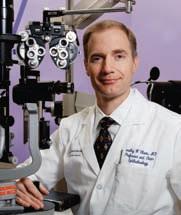
A curious thing happened soon after Emory geneticist Anthony Chan implanted stem cells from the tooth of a rhesus macaque into the brains of mice. After a few days, the stem cells began to disappear. Meanwhile, new neural cells—many of them neurons—had begun to form. The research was pub lished in Stem Cells in 2008.

In the new approach, the researchers isolated antibody-secreting plasma cells from the blood of volunteers a week after flu vaccination. They then cloned the antibody genes from these antibodysecreting cells.
“There’s a transient window where the cells that are making high-quality antibody are found in the blood,” Ahmed says. “They disappear from the blood afterwards, but at a certain point, most of the antibody-secreting cells are making antibody specific for flu virus.”
“With just a few tablespoons of blood, we can now rapidly generate human antibodies that can be used for immunization, diagnosis, and treatment of newly emerging strains of influenza,” says Oklahoma collaborator Patrick Wilson. “In the face of a disease outbreak, the ability to quickly produce infection-fighting human monoclonal antibodies would be invaluable.”
Editor’s note: Keith Klugman’s research was funded by Wyeth Research, and he is a paid consultant for Wyeth Pharmaceuticals.
“If you drive through Western Kansas in late June before they cut the wheat, and the wind is blowing, it’s almost like being in a ship on the ocean. You get a sense of wide open spaces, all around you.”
That’s Timothy Olsen, F. Phinizy Calhoun Sr. Chair of Ophthalmology, who grew up in small-town Kansas and spent the summers farming with his grandfather. For just more than one year, Olsen has been tending the field (and steering the ship) of the Emory Eye Center as director. It’s a challenging job. Besides administration and fund-raising, he does everything his faculty members do: patient care, teaching, and research.
Olsen’s resume shows a progression of honors, from his MD at the university of Kansas to award-winning research on proteins of age-related macular degeneration (AMD), the development of new surgical instruments and methods, and six awards for distinguished teaching—at the universities of Kansas, Wisconsin, and Minnesota, as well as Emory.
An active physician-scientist, Olsen has an NIH grant to study the way proteins function in damaged retina cells. Additionally, he’s researching ways to replace those dam-
“Training at Emory gives you a deep appreciation for the culture of this place,” Olsen says. “Emory offers one of the most challenging ophthalmology programs in the country, but the people here work well together and share their knowledge generously. It’s not surprising that many of our trainees, like me, want to come back and join our faculty.”
On his 2008 return to Emory, Olsen inherited a program that ranks in the top 10 in the country. His vision for the program’s future, like his job itself, is wideranging. While building the faculty to keep pace with a large and growing number of patients, Olsen plans to move forward on other endeavors close to his heart, including institutional partnerships with the CDC and Georgia Tech. Research initiatives already under way include the Ocular Oncology Group, which combines the expertise of ophthalmology with research at Emory Winship Cancer Institute, and the Predictive Health Group, a team of ophthalmology faculty helping develop genetics profiling. ultimately, all these efforts benefit patients, Olsen says.
Olsen’s lifelong, farm-influenced habit of rising early brings him to the office around 4:00 a.m. “Since age 7, when I came out of the doctor’s office with my first pair of glasses and could finally see clearly, I’ve wanted to help people see better,” Olsen says.—Ginger Pyron
Considered adult stem cells, dental stem cells can regenerate many different types of cells. In light of Chan’s research, dental pulp stem cells show promise for cell therapy and regenerative medicine, specifically for therapies associated with the central nervous system, such as Huntington’s and Parkinson’s. So far, dental pulp cells have been used to regenerate dental and craniofacial cells. The proliferation of adult stem cells is easier to control than that of embryonic stem cells, which have the potential of becoming tumors.
“You want the cells to do their job and be gone,” says Chan, a geneticist in Emory’s Department of Human Genetics and researcher at Yerkes National Primate Research Center.
Because dental pulp stem cells can be isolated from anyone at any age, Chan is interested in the possibility of people banking their cells.
“Being able to use your own stem cells for therapy would greatly decrease the risk of cell rejection that we now experience in transplant medicine,” he says.
The latest research from Chan and his team examines whether dental pulp stem cells from monkeys with Huntington’s disease can enhance brain cell development in the same way that dental pulp stem cells from healthy monkeys do. Chan’s group developed the first transgenic monkey model for Huntington’s disease in 2008.
m ovin G For WA r D M ORE NEWS Spring 2009 21
20 emory he A lth cience S
Emory’s ophthalmology chair Tim Olsen
Issues of teen intimacy

When to start talking about sex and what to say is not a simple issue From individual families to churches and schools, a debate swings between “too much too soon” or “too little too late.”
Emory’s Jane Fonda Center is working to get past the controversy by building programs that put an emphasis back on the core needs of young people, starting as early as the sixth grade.
“Becoming sexual is evolutionary, involuntary, and inevitable,” says the center’s director Melissa Kottke. “However, becoming a healthy sexual being is not. Today, we must start at younger ages than ever before to help young people make smooth transitions to adulthood.”
The Fonda Center is approaching the challenge on multiple fronts, from sex educa-
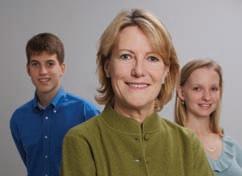
“Today, we must start at younger ages than ever before to help young people make smooth transitions to adulthood.”
tion advocacy to partner violence prevention. It has developed a curriculum to reduce negative impacts of the media on adolescent sexual attitudes, a computer-based series to empower teens to protect reproductive health, and a summer training institute for Atlanta teen leaders.
Behind all these programs is the context that youth grow up in social environments rather than a vacuum. Adolescents are part of a mega-billion-dollar industry that markets to and portrays young girls as sex objects, says Marie Mitchell, the center’s program director. “That the media focuses on stimulation rather than education poses a real threat.”
To help counter that negative influence, the center has developed a curriculum, Media Madness, with federal funding. The lessons help young people understand the media’s motivation to make money rather
The thing we’d rather not talk about
than portray real-life situations that can inform personal decisions. First piloted with 7th and 8th grade students in the Atlanta Public Schools, the program will be implemented in the 6th grade this fall and disseminated statewide.
“Sixth grade is a time when many youth start to swim in the much bigger pond of middle school,” says Marion Howard, the center’s research director. “Not only are peers becoming more influential in their lives, they are left much more on their own to manage personal feelings and behaviors.”
With a new grant from the Ford Foundation, the Fonda Center is conceptualizing a new framework for thought and action regarding sex education, which includes ways to partner with youth. Center staff are planning regional meetings among professionals interested in sex education and a nationwide youth retreat. The impetus behind the planning is to lay a foundation among young people for respect and responsible action, says Kottke. “Early on young people must learn to respect their bodies as well as their rights and the rights of others to be free from pregnancy and infection.”
Another recent grant, from the Robert Wood Johnson Foundation (RWJF), allows the Fonda Center to teach youth how to develop healthy relationships and prevent intimate partner violence, a serious public health problem nationally and in Georgia. According to a 2007 report from the Georgia Department of Human Resources, one out of every six Georgia high school students was hit, slapped, or physically hurt on purpose by a boyfriend or girlfriend during the prior 12 months. The Fonda Center will offer the dating violence prevention program to 7th graders in the Atlanta Public Schools. The effort will be supported by a national social marketing campaign from the RWJF and multiple local agencies who are banding together to reduce teen dating violence.
As an ongoing effort, each summer the Fonda Center trains 60 Atlanta teen leaders
from local high schools to deliver an abstinence curriculum to 8th grade classrooms, under the guidance of staff from Grady Hospital’s teen services.
“Young people exist along a continuum,” says Kottke. “Each teen develops according to his or her unique timetable. We want to ensure that young people have sufficient preparation and guidance.”
That’s why the Fonda Center is starting to help young people before too little is too late.
—Rhonda Mullen
WEB CONNECTION Visit the center at janefondacenter.emory.edu or call 404-712-8730.
More often than not, today’s health care professionals receive little education on human sexuality, an essential part of health and well-being.
Bucking that trend, Sally Lehr has taught an elective class, Human Sexuality in Health and Illness, for more than 24 years. The teacher in Emory’s Nell Hodgson Woodruff School of Nursing says that she’s determined to help her students feel more comfortable raising important issues around sex and sexuality with patients and their families.
If patients are too uncomfortable to talk with their doctors about changing medications, they often take another route. “They may figure out why their sex drive has changed and quit taking the medicine.”— Sally Lehr
Even medical professionals are often uncomfortable discussing sex, and that’s a problem, says Lehr. “Physicians don’t get any more training in sexuality than anyone else.” As an example, Lehr refers to an ob/gyn resident she met at a conference three years ago who had gone through 18,000 hours of medical training—but only 45 minutes on human sexuality. “But people expect doctors to be comfortable talking about sex,” says Lehr.
If patients are too uncomfortable to talk with their doctors about changing medications, they often take another route. “They may figure out why their sex drive has changed and quit taking the medicine,” Lehr says. While that solution might help their sex life in the short term, it comes at the long-term cost of any benefits the prescription drug was providing.
Lehr had no intention herself of talking about sexuality until she began studying for her master’s in nursing in 1974. In the process of being educated as an advanced practice psychiatric nurse, she became intrigued with sexuality’s connection to health when she met a faculty member, Frances Nagata, who also worked as a sex therapist. “She was the first person in my life who ever talked openly about it,” Lehr says. When Nagata started the sexuality class in the nursing school, Lehr was happy to serve as her assistant, helping others become more comfortable with the topic. When her mentor left in 1984, it was a natural fit for Lehr to take on full responsibility for the class.

Since then, the course has evolved to address current issues and new information. Transgendered sexuality and homosexuality have become major topics in class, along with a range of other sex-related topics that often connect to patients and nurses: sexuality and disability, rape, and sexuality and spirituality.
While students become more comfortable talking about sexuality, they also gain empathy and information, as when they had an opportunity to talk with a guest speaker in a wheelchair about his sex life. “I think that’s really important for the students to hear,” says Lehr. “Then when they see other people in wheelchairs, they know there may be some very similar concerns and issues for them.” —Dana Goldman
Emory Winship receives NCI Cancer Center designation
When Ansley Riedel (right) was diagnosed with a deadly form of leukemia as a young child, her family began what they describe as “an amazing treatment journey.” At a time when bone marrow transplants were still relatively rare, they traveled across the country from Atlanta to Seattle to get the best possible care for Ansley. A bone marrow transplant worked—with the help of little brother Joseph (left)—and today Ansley is a college student with plans to become an oncology nurse.
If she were diagnosed today, Riedel would be able to get that quality care in her hometown at Emory Winship Cancer Institute. This April, Winship received validation of its growth by earning coveted designation as a National Cancer Institute Cancer Center. It is the first medical facility in Georgia to do so.
The designation will benefit patients through increased access to new clinical trials and technologies available only through NCI-designated cancer centers. During the next three years, Winship will receive almost $4.3 million to grow its scientific research base. The research component sits at the core of other support activities for cancer patients and families such as clinical care, supporting services, and education.
Established in 1937 with a gift from Coca Cola CEO Robert Woodruff, Winship has now made good on Woodruff’s vision that no one should have to leave Georgia to receive excellent cancer care.
WEB CONNECTION For more information on the NCI designation, see whsc.emory.edu/r_nci_release.html
A related video is available at whsc.emory.edu/r_nci_ video.html. An audio slide show is available at whsc. emory.edu/r_nci_slides.html
m ovin G For WA r D M ORE NEWS
23 Spring 2009
22 emory he A lth cience S
The family of Vicki Riedel (center), a fundraiser for the Winship Cancer Institute, had their own struggle with cancer 19 years ago.
Suggested readings:
AAP’s “Responding to 7 Common Parental Concerns About Vaccines & Vaccine Safety,” practice.aap.org/content. aspx?aid=106&nodeID=4005
CDC’s Autism Information Center, including regular updates on studies, cdc.gov/ncbddd/autism/vaccines.htm, and current research about autism and vaccines by CDC and research partners, cdc.gov/ncbddd/autism/documents/vaccine_studies.pdf
NIH’s “Why do many doctors and scientists believe that the MMR vaccine does not cause autism?,” nichd.nih.gov/publications/pubs/ autism/mmr/sub3.cfm
I spend a lot of time talking with families about the many possible causes about which they worry, many gleaned from the Internet. It is rewarding to be able to assure them that they are not at fault. The causes of these disorders are largely unknown, and therefore without currently recognized preventive measures.
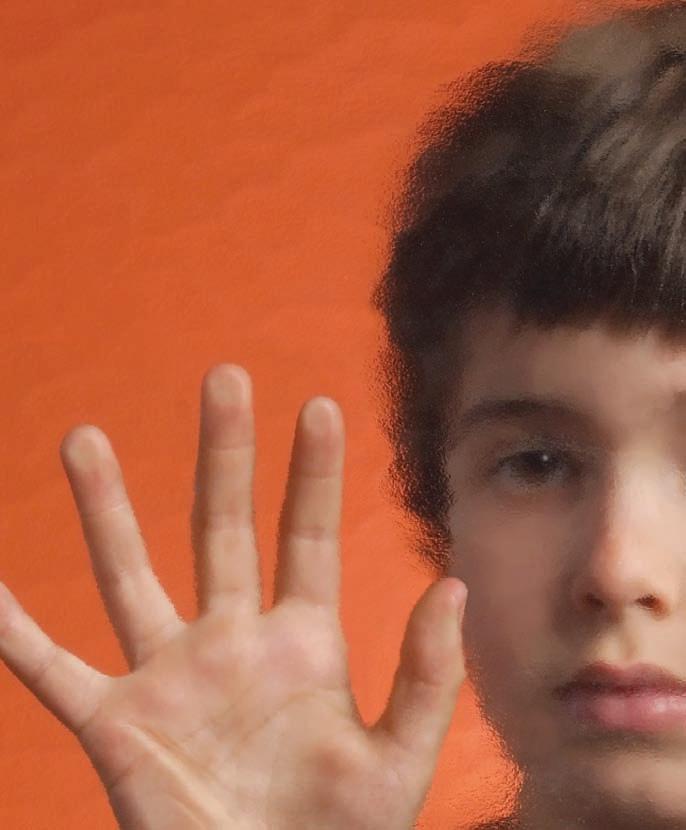


 Fred Sanfilippo, MD, PhD
Fred Sanfilippo, MD, PhD
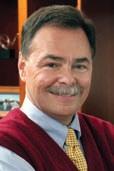












 By Quinn Eastman • Photography by Jack Kearse
By Quinn Eastman • Photography by Jack Kearse



 By Kay Torrance • Illustration by Stanislawa Kodman
By Kay Torrance • Illustration by Stanislawa Kodman



















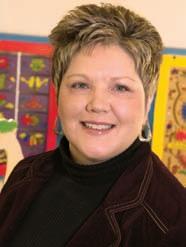 By Amy Pakula, md
By Amy Pakula, md

